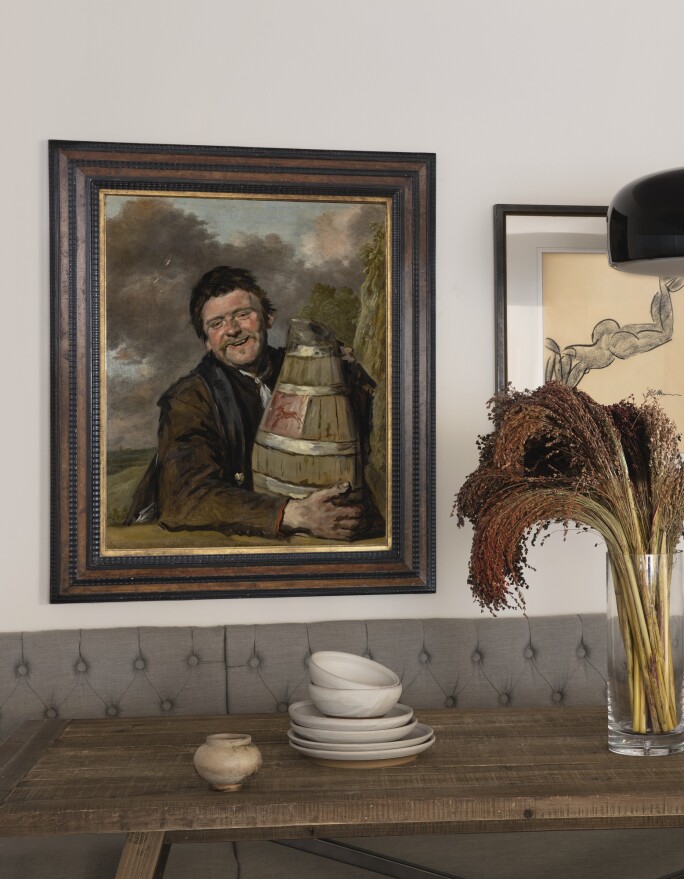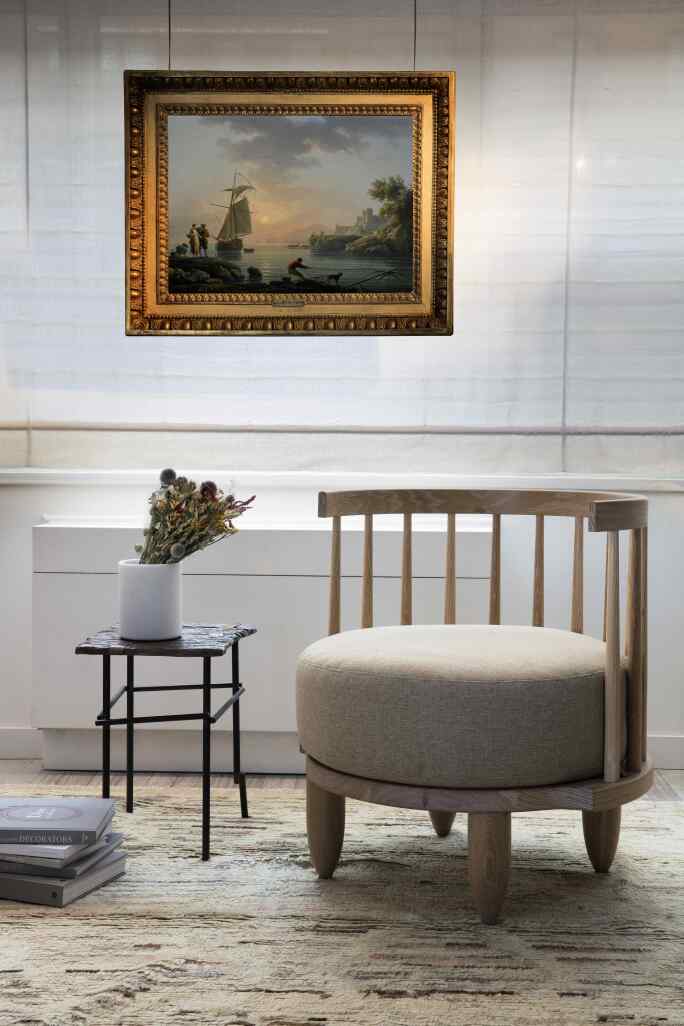A lthough Tina Ramchandani describes her design aesthetic as minimalist, her interiors are far from barren and basic. Having previously worked for renowned designer Vicente Wolf, Ramchandani has honed a style all her own since launching her eponymous firm in the last five years. “I prefer the simplicity of clean lines and rich textures over heavy use of pattern and embellishments,” Ramchandani told Sotheby’s. “I’m inherently attracted to styles that are warm, sophisticated and timeless with a slow build of subtle layers.” Illustrating that even in minimalist interiors, these layers can include art from 500 years ago, the designer created vignettes with works from Sotheby’s Master Paintings Evening Sale (30 January | New York). Ahead, read more about Ramchandani’s passion for “soulful minimalism” and view her Master Painting pairings.
Where do you find your design inspiration?
Many things influence my style, however my true passion is traveling, as I enjoy learning about what defines beauty across the globe. I love picking up bits and pieces of what I see in other cultures and interpreting that in my work in a way that feels customized for the homeowner. Living in New York also influences me. We’re in a melting pot of cultures, and I’m constantly meeting new people with new ideas that help expand my world view.
How has your career and style evolved over the past decade?
My design aesthetic is always evolving, but I’m generally drawn to a warm and sophisticated look. I started out designing for the unparalleled Vicente Wolf, who taught me to focus my attention on what I wanted to say with my interiors. I then opened my own firm, Tina Ramchandani Creative, which allowed me to refine my signature style. I’m approaching the five-year mark, and 2018 was a particularly proud year for me. I achieved an ongoing personal goal of traveling frequently, as well as a professional goal of being named one of House Beautiful’s Next Wave designers.
"I think modern spaces are better backdrops for Old Masters than traditional spaces. The natural restraint of a modern interior allows the juxtaposition between old and new to breathe, adding depth and interest."
How do you help clients choose art for their space?
You want to walk by a piece every day and feel something for it, just like you want to walk into your home or a specific room and feel something, whether that be happy, calm and relaxed, excited, etc. Choosing art is easy when you take the pressure away from choosing “the right” thing.
What was your experience like integrating classical art from Sotheby’s into a modern space?
Pairing my clean lines with Sotheby's classical art was almost effortless. I chose art that immediately spoke to me and integrated it into my interiors as I would any other classification of art. In fact, I think modern spaces are better backdrops for Old Masters than traditional spaces. The natural restraint of a modern interior allows the juxtaposition between old and new to breathe, adding depth and interest. Nothing else in the surrounding area can compete with the opulence of these pieces. You don’t always feel that ease in pairings that are all one style.
Were there any particular paintings that stood out to you?
The first piece I chose to work with was Portrait of a Fisherman Holding a Beer Keg by Frans Hals and his studio. It felt light, jovial and enriching. When I saw it I was immediately uplifted. I knew the perfect setting for this piece would be a dining room, where you break bread with friends while celebrating life, health and happiness.
What are some other elements to consider when choosing where to place art in your home?
I like to position art in a way where people can readily interact with it. Placing one piece in the middle of a large wall doesn't do justice to the art or the room. Placing a small piece over a small table that you pass often creates an interesting moment and allows you to truly enjoy the art on a daily basis. I'm also a fan of placing pieces off center, or on the "heavy" side of a room. I don't stick to traditional rules and let the emotion of a piece dictate its placement.
Why is framing so important?
Framing is crucial, and I allow the art to determine the frame. For example, the Vernet piece, A Mediterranean Port at Sunset, is created with oil on copper. The copper allows the oil to shimmer when viewed in person, and this piece required an intricate gold frame to balance that sheen. Framing plays a major role by customizing the piece and anchoring it to a specific space.
SPECIAL THANKS
Interiors designed by Tina Ramchandani Creative.
Furniture and accessories provided by FAIR.
Rugs provided by Crosby Street Studios.
Contemporary artwork provided by Sugarlift. Art by John Dunnan, Rubin415, and Robert van Bangaert






